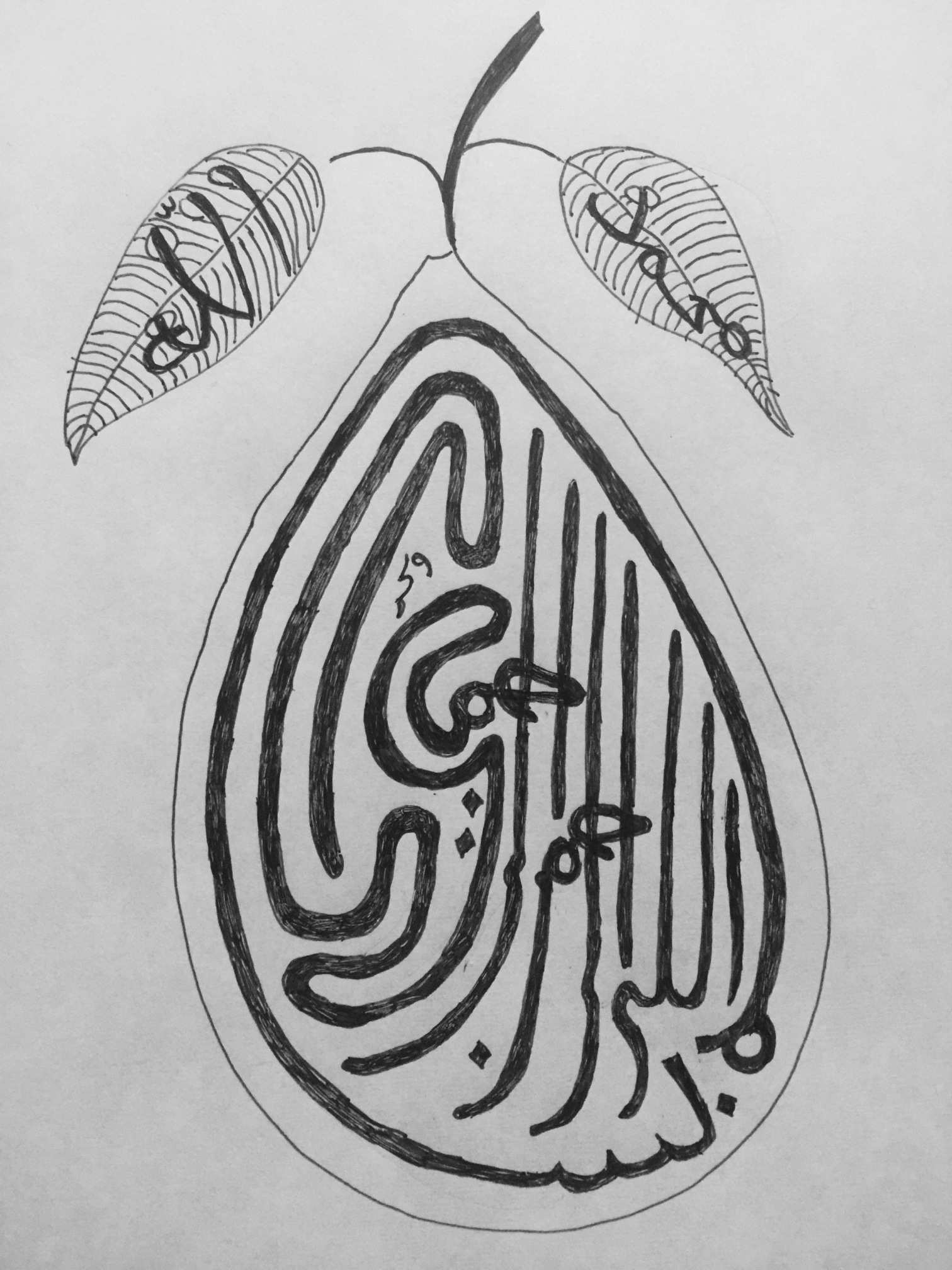THE QUR’ĀN, GOD’S WORD AS SACRED DESIGN, AND THE ART OF CALLIGRAPHY
As Khatibi and Sijelmassi discuss in Splendor of Islamic Calligraphy, caligrams can and should be artistically viewed as more than just verbal expression, but also expression through geometric shape and form. Such art has this more complex level of meaning that derives from the use of space between letters and words and the contortions and stylizing in the caligram phrase. I think such levels of elevated calligraphy hint at the mystical formulation of writing itself.
Some forms of calligraphy are codified and take very specific forms as they follow Al-Adab with specific logical and imaginative connotation’s that date as far back as to the founder of Arabic calligraphy, Ibn Muqla, in the 9th century A.D. But such calligraphy forms have, hand in hand with the spread of Islam, taken on new tongues such as Swahili and Urdu and with it new cultural shapes. These have provided diverse forms with new ways of manipulating letters and powerful artistic freedom to try new things, which inspired me in my piece of calligraphy.



Seen in my caligram called Kamuthra, which is the Arabic word for pear fruit, are the words Allah and Mohammmed of the leaves. Also prominent inside of the pear is the phrase (bismillah al rahman al Rahim). This phrase called commonly the bismillah means in the name of God the Most Gracious the Most Merciful. I wanted to bring a strong sense of naturalism and life to the piece which I then juxtaposed with monotone lines all in black.
For me whenever I looked at a more complex Arabic caligrams as a child, before I had much understanding of Arabic, I felt that much of the meaning of the piece was wrapped up and cloistered as to become inaccessible seemingly on purpose. But this inaccessibility remained even after I understood the letters and writing in such art highlighting a mystical philosophy of calligraphy that primes it for encounter with Islam and for Quranic writing.
In Kamuthra, I also wanted to capture this idea that being a submitted or muslim and adhering to the shahada was something that had many layers and bore fruit over time both spiritually and physically. I put Mohamed and Allah on the leaves at the top of the stem because they are beings who produce energy and invigorate the system, body, and mind. Spatially they are both above the bismallah, the phrase uttered my Muslims to show respect and devotion to God, which preserves this authority. Calligraphy has the ability to have the strength of a phrase just as the bismallah be delicately shielded behind the caligram form.